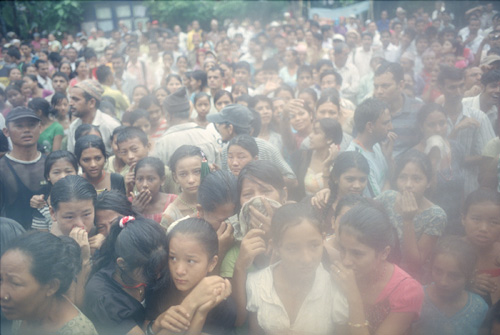Viviane DALLES
This post is also available in:
 Anglais
Anglais
© Viviane Dalles 2009
A landlocked Bhuddist country, Bhutan is well-known for being one of the last Shangri-La (paradise) on earth. Bordering China to the north and India to the south, this kingdom is home to about 600,000 people. In 1974, the king of Bhutan, Jigme Singye Wangchuck, (1974-2006) announced the concept of Gross National Happiness (GNH) as the country’s new philosophy of economic and social development. He believed that the happiness of his people was much more important than the country’s Gross Domestic Product. But in the late 80s, in order to re-enforce a sense of national identity and ensure a homogenous culture, the King of Bhutan imposed the rule of “One nation, One people” in which the dress code and the official behavior had to be respected by every Bhutanese citizen. As a result, in the 90s, the "Lhotshampas", an ethnic group of Nepali origin who had been called on by the Kingdom to cultivate land in the south of the country, were expelled. As a minority speaking Nepali and practicing Hinduism, they represented a threat to the Kingdom’s rule of “One nation, One people” and they were declared to be de facto illegal immigrants. In total one sixth of the Bhutanese population became refugees with 107.000 of them settling in camps in Nepal coordinated by the United Nations High Commissioner for Refugees (UNHCR). For the past 18 years, the Nepali and the Bhutanese governments have been holding yearly meetings to discuss their fate but neither country has been willing to accept them as citizens, leaving the Lhotshampas in limbo. In November 2007, after years of waiting, the UNHCR with the cooperation of the Nepali Government and the International Organization for Migration (IOM) began to roll out a large resettlement programme: Within 5 years, 60.000 of the refugees were to migrate to the United States with the remaining refugees leaving for Denmark, Norway, Canada, Netherlands, New Zealand and Australia. From the refugees camps in Nepal to their new house in Dallas (United States), I followed the Mainali family.
© Viviane Dalles 2009
NEWSLETTER
Pour recevoir nos informations, inscrivez votre adresse email.EN SAVOIR PLUS

Pour Que l’Esprit Vive,
Association loi 1901 reconnue d’utilité publique
Siège social
20 rue Lalande,
75014 Paris – France


